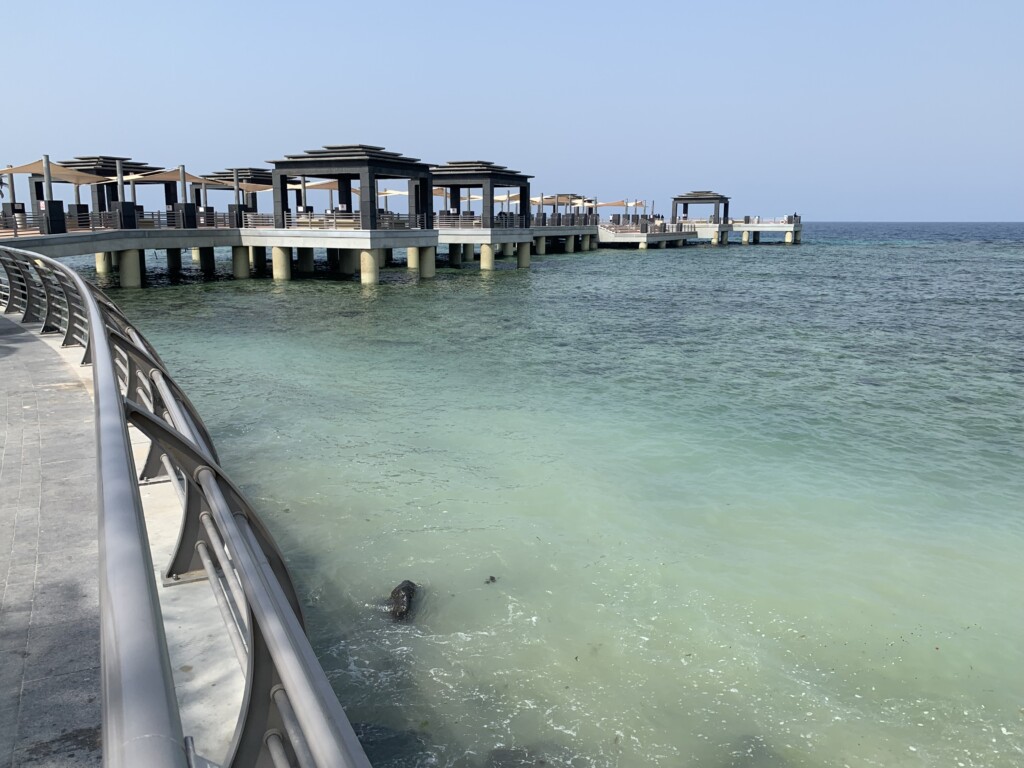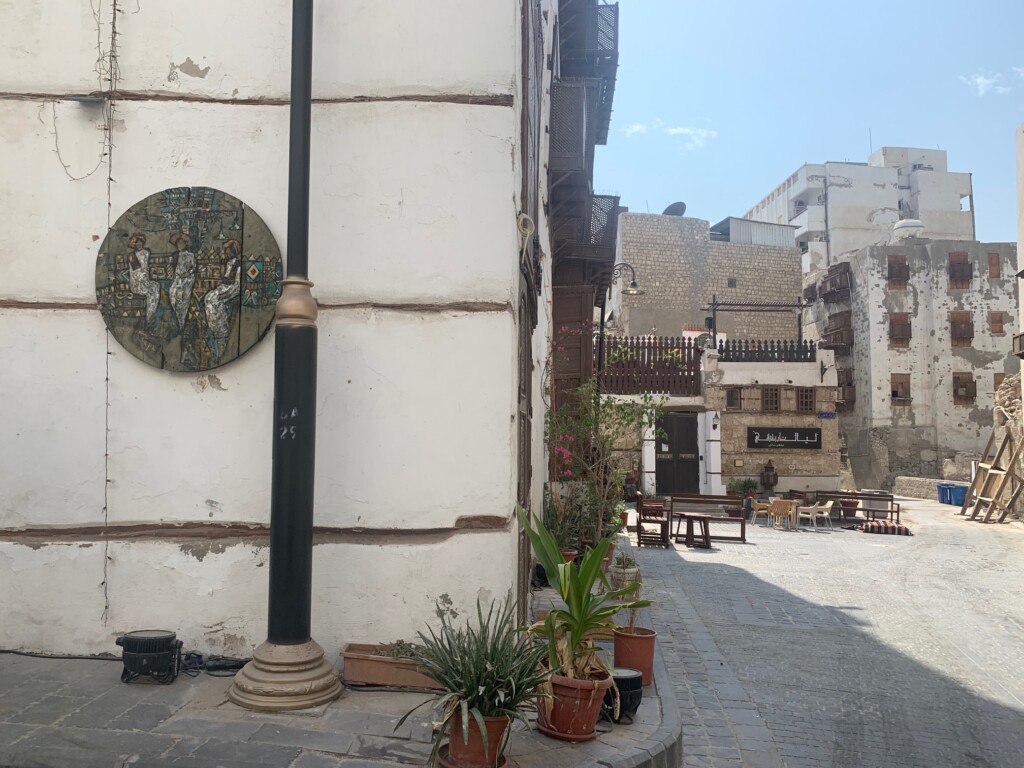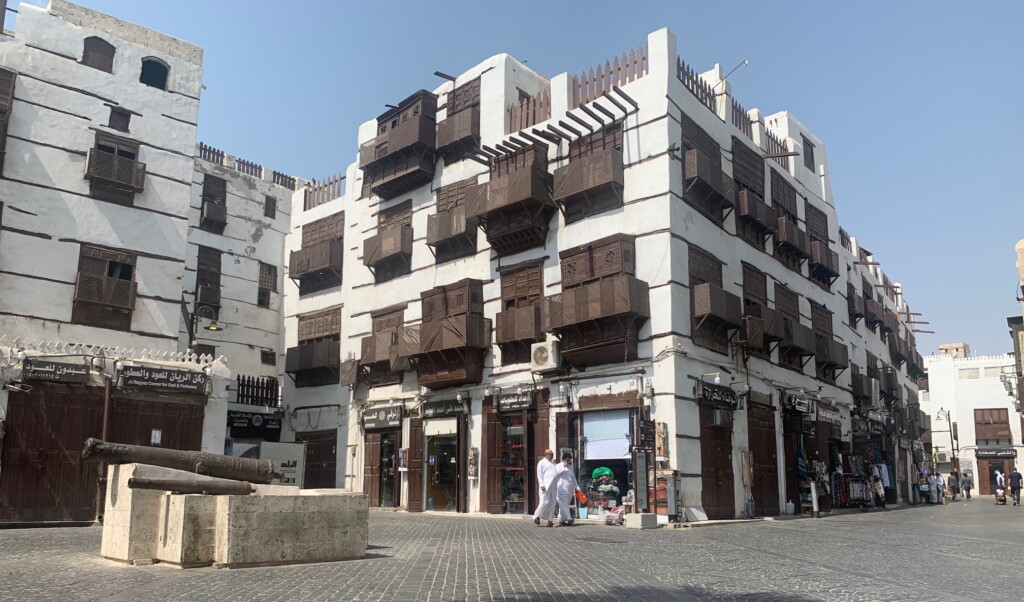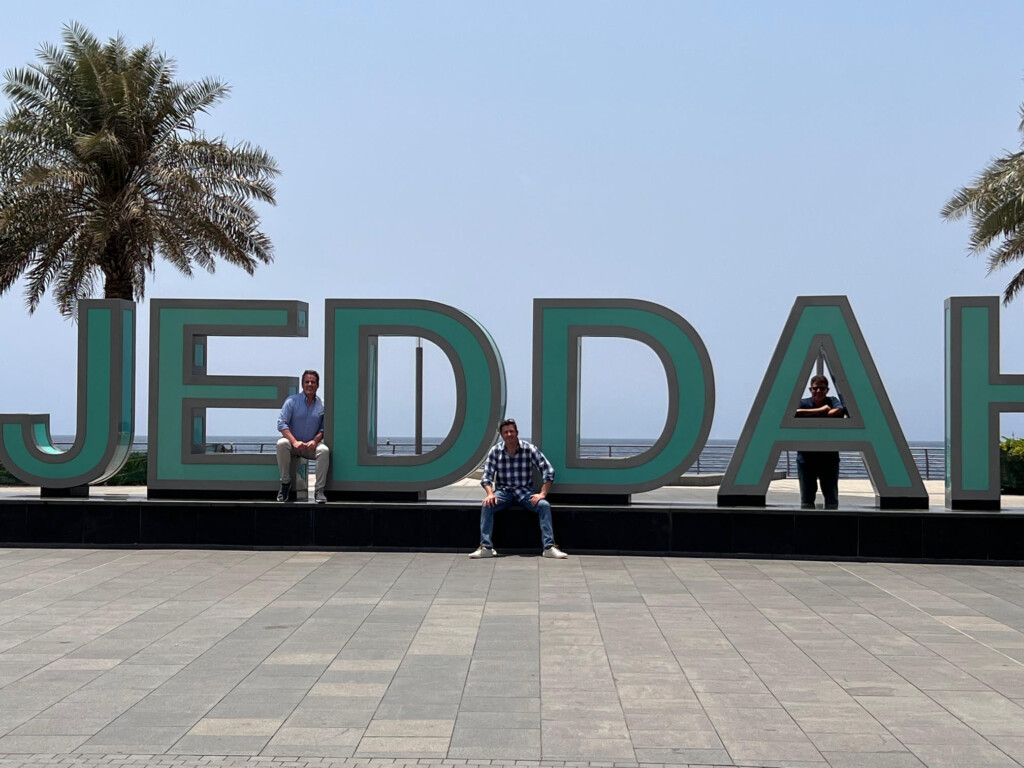For those stricken with wanderlust, who’ve embarked on a quest to reach every corner of the globe, a trip to Saudi Arabia might seem like an inevitable destination. However, it’s not a destination without its ethical dilemmas. We’ll share with you the conundrum and beauty of visiting a country with a complex, often controversial, history. So when it opened for tourist visas for Americans in 2019, we knew that we needed to use the opportunity to learn for ourselves.
Our journey to Saudi Arabia began on a hot Friday afternoon in April 2022. It was a trip that brought us face-to-face with our own beliefs and the reality of a nation striving to transform its global image. Just days before our arrival, Saudi Arabia executed 81 men, a stark reminder of the country’s harsh penal code and human rights issues. This was the backdrop against which we landed in Jeddah, a city on the Red Sea, with a mix of apprehension and curiosity.
The Ethical Crossroads
Traveling to Saudi Arabia raises questions that go beyond the usual tourist considerations. How do you reconcile spending money in a country known for its human rights abuses? How do you balance the desire to explore new cultures with the knowledge of past and ongoing atrocities? As we walked through the streets of Jeddah, these questions weighed heavily on our minds.
The city’s historic old market, bustling with life, was a stark contrast to the grim news reports. Here, people were going about their daily lives, shopping, and socializing. Our guide, a local named Badr, emphasized the importance of understanding and connecting with the people. “People, they don’t know us. They need to come to know us. If they came, they can judge,” she said, encapsulating the essence of why travel can be a powerful tool for bridging divides.

The Changing Face of Saudi Arabia
Saudi Arabia is a country at a crossroads, grappling with its past while ambitiously pushing towards modernization. This is evident the moment you arrive in Jeddah, where construction cranes dominate the skyline. The city is undergoing rapid expansion, with new skyscrapers, malls, and luxury hotels popping up everywhere. The Jeddah Tower, set to be the world’s tallest building at over 3,000 feet, is a testament to this ambition.
One of the most striking aspects of this transformation is the newfound freedom for women. Just a few years ago, women couldn’t drive in Saudi Arabia. Today, they’re not only driving but also actively participating in the workforce and public life.
Badr shared her own experience, noting how smoothly the transition had gone. “Everyone was thinking that it would be a big mess, and nothing at all happened. I was shocked,” she said.

Saudi Arabia Vision 2030 and the Future
The rapid development is part of Saudi Arabia’s Vision 2030, an ambitious plan to diversify the economy and reduce dependence on oil. Tourism plays a significant role in this vision, with a goal of attracting 100 million visitors by 2030. This has led to the creation of projects like Neom, a $500 billion futuristic city featuring glow-in-the-dark beaches, floating cities, and even a fake moon.
Yet, despite these grand plans, the country still grapples with its international image. Western media often highlight the negative aspects, from human rights violations to political controversies. Our guide Badr repeatedly urged us to “stop watching news” and see the country for ourselves. This sentiment reflects a broader effort to change perceptions and encourage tourists to experience Saudi Arabia firsthand.

Experiencing Local Culture
One of the highlights of our trip was exploring Jeddah’s rich cultural heritage. We visited the Jeddah Central Fish Market, where the vibrant colors of the fish reflected the city’s connection to the Red Sea. Just looking around we saw not only a wide variety of fish, but were awe struck by the colorful assortment. The market, bustling with activity, offers a glimpse into the daily lives of the locals. From the friendly fishmongers to the auctioning of the daily catch, it was an immersive experience. This is a lively central part of day to day life in Jeddah.

Another significant stop was Al Balad, the historic old city of Jeddah. This UNESCO World Heritage Site dates back 1,300 years and features buildings that are 500 years old. Walking through its narrow streets, with their leaning buildings and traditional architecture, felt like stepping back in time. Al Balad represents a romantic, old-world view of Saudi Arabia, contrasting sharply with the modern developments surrounding it. This is where many of the old souks are located. If you’re wanting to have a feeling of what it would be like to shop in the past of Jeddah, this is where you come. It is a spot that gives off the vibe of an ancient city within the growing modern world.

A Friday During Ramadan in Saudi Arabia
Our visit coincided with Ramadan, the holy month of fasting for Muslims. This added another layer to our experience, as the streets were quieter than usual during the day. Most people were either at home fasting or at the mosque praying. It was evident on our flight from Dubai, with a vast majority of fellow travelers coming to pray at Mecca in their traditional Ihram clothing. The waterfront of the Jeddah Corniche, with its stunningly clear, celeste green water, was a serene spot to reflect on our journey. Watching the fish on a feeding frenzy, we felt a connection to the simplicity and beauty of everyday life here. We can only imagine how different the country would feel had we come on a different day. However, this did create quite the unique experience and made navigating around vastly easier.

The Ethical Dilemma
Traveling to Saudi Arabia is not without its ethical challenges. The country’s history and current events can make it difficult to justify a visit. However, it’s essential to remember that travel is about understanding and connecting with people. By visiting places like Saudi Arabia, we can gain a deeper insight into their culture, traditions, and struggles.
We spent only six hours on the ground in Jeddah, but it was an experience that left a lasting impression. We met people eager to share their stories and show us their country. We saw a nation in the midst of a significant transformation, trying to balance tradition with modernity.

Conclusion: Bridging the Divide
In the end, our journey to Saudi Arabia was a reminder that travel is about more than just seeing new places. It’s about connecting with people and understanding their world. Despite the ethical dilemmas and the stark contrasts between our beliefs and the realities of Saudi Arabia, we found common ground in our shared humanity.
As Badr wisely said, “We are human beings. Everywhere we are the same. But stop watching news, take out the politics. We are the same. We are equal in everything.” This journey reminded us that, no matter where we go, the essence of travel lies in bridging divides and finding commonalities.
For those who want to see every country in the world, Saudi Arabia offers a unique, complex, and ultimately rewarding experience. It’s a place where the past and future collide, creating a rich tapestry of culture, tradition, and ambition. If you’re willing to navigate the ethical crossroads, you’ll find a country eager to welcome you and share its story.

